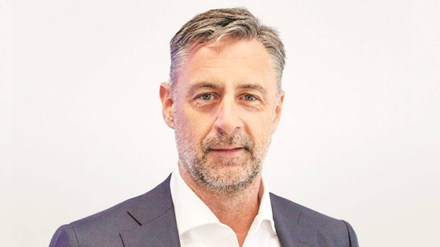A modernised network is the backbone of next-generation digital experiences, says Phil Mottram, executive vice-president & general manager, HPE Aruba Networking, as he discusses with Sudhir Chowdhary some of the key industry trends and opportunities for growth. Excerpts:
The space that HPE Aruba Networking is operating in is becoming extremely competitive. What do you consider your key strengths?
What makes us stand out is that we have products in all the right areas. We started our business in Wi-Fi 20+ years ago when that was in its very early stages. Then we moved into the next part of the market, which is, campus LAN switching, and we have been successful in that part of the market for the last six years. We then saw that the networking requirement was changing in terms of how people linked offices together and other sites. So, that is why we moved into SD-WAN.
More recently in the last couple of years, since I have been running the business, we have expanded into three new areas, one being data centre networks, which is a new area of opportunity for us, but it has been built on our expertise in campus and LAN switching. HPE’s private 5G solutions have been designed to operate in tandem with Aruba Wi-Fi networks using technologies such as Aruba Air Pass, which automates 5G to Wi-Fi roaming.
Last but not least, there is growing recognition of the network’s role in business transformation – and, in particular, of the link between the network and both security and innovation. The world’s largest companies rely on us to provide a secure, AI-powered edge services platform that spans across campus, branch, data centre, and remote working environments.
Tell us about the 5G versus Wi-Fi debate.
If hybrid work has made us aware of one thing, it’s the benefits of Wi-Fi. Our very life depends on strong Wi-Fi – days filled with Zoom calls, mobile banking transactions, our kids’ hybrid learning – all hinge on strong Wi-Fi. But try taking that Zoom meeting outside for a walk, and things get shaky. While 5G promises to close the Wi-Fi gap with a more reliable and flexible kind of wireless connectivity that fuels digital acceleration across multiple industries, it’s not a replacement for Wi-Fi; 5G complements it.
How do you see India contributing towards the company’s overall growth?
India is a huge market of opportunity for us, a place where HPE employs more than 14,000 people. India’s digital surge is well underway, both on the consumer as well as business side. We are dealing with a lot of companies who are making investments and trying to transform digitally. India is the IT powerhouse of the world. There are scores of big global players present along with their huge campus facilities, large number of staff, etc – they need robust, agile and secure network infrastructure. Basically, the public and private sectors are both propelling digital consumption growth. We see many opportunities in helping organisations adopt and transform their IT networks.
How are you addressing the changing trends in cybersecurity?
We have recognised the fact that organisations see network and security converging in what we term as ‘security-first networking’. We’re also familiar with the secure access service edge (SASE) framework; as identified by Gartner, this delivers converged network and security as a service capabilities, including SD-WAN, SWG, CASB, NGFW and zero trust network access (ZTNA). In support of that, we acquired Axis Security 4-5 months ago. The convergence of Aruba and Axis Security solutions will transform edge-to-cloud connectivity with a comprehensive SASE solution that provides enterprises with the highest levels of security for both IoT devices and all users’ access across geographically distributed locations.
